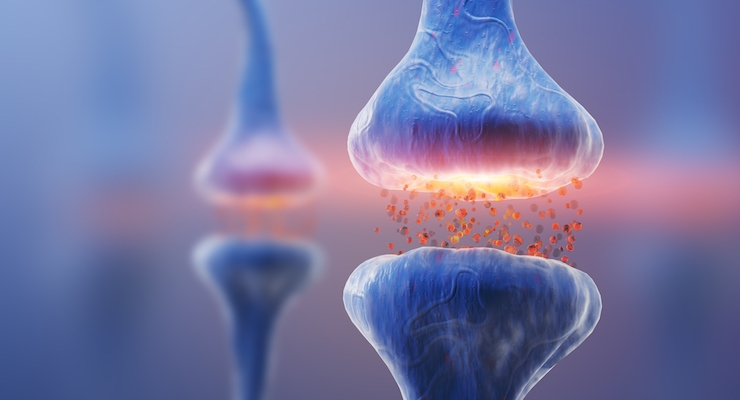Market Updates, Research
Study Yields Deeper Understanding of Neuron Changes After a Meal
The inhibitory function of the “satiety circuit” in the brain is where the most change occurs.

By: Mike Montemarano

Researchers investigated the remodeling of synapses in mice in order to understand what mechanism at play was responsible for feelings of satiety after a balanced meal in humans.
According to a study conducted by an international collective of research organizations, which was published in the journal Cell Reports, the network of neurons responsible for feeling sated after a meal are mechanized in reaction to a rise in blood glucose levels, which typically occurs after eating.
Additionally, researchers determined that these neuronal circuits can modify their connections, which, in turn, can adjust feeding behavior that more ideally regulates the amount of food a person consumes and the amount of calories they expend each day.
It is hoped that reaching an understanding of the physiological activity in neuronal networks may one day lead to therapeutic developments for weight loss and weight management among obese people.
Neuronal circuits responsible for feelings of satiety are activated on the time scale of a meal, which regulates feeding behavior. The researchers focused on POMC neurons in the hypothalamus. They are connected to a large number of neurons throughout the brain, and have a greater plasticity than other brain regions. They can be made and unmade very quickly based on hormonal fluctuations.
Researchers observed that this neuronal circuit is not modified after a balanced meal, but that other nerve cells associated with POMC neurons known as astrocytes are actually changing form following food intake.
The exhitatory and inhibitory exchange between POMC neurons and astrocytes, referred to as the melanocortin system, is now understood to be directly influenced by blood glucose levels. It is also understood that the inhibitory function of this system is ultimately subject to greater physiological change based on hormone levels, and researchers believe that this plasticity functions to preserve energy homeostasis amid drastic changes in extreme metabolic conditions.
While it was previously understood that the melanocortin system experienced physiological changes in extreme metabolic conditions including starvation and overeating, researchers determined that changes take place during day-to-day life in response to subtle metabolic changes.
Astrocytes sheathe POMC neurons and typically inhibit POMC activity. After a meal, blood glucose levels temporarily increase, and astrocytes detect this signal and retract it in less than one hour. Once the “brakes” are released, POMC neurons are activated, ultimately promoting the feeling of satiety.
Researchers found that meals which were high in fats did not lead to this reaction, however, it will require more research to determine if there is another mechanism at play triggering full feelings, or if high-fat meals are less effective in promoting feelings of fullness. Additionally, it is not known whether sweeteners have the same effects, or whether they create satiety through sensations of sweetness without satisfying hunger.




















